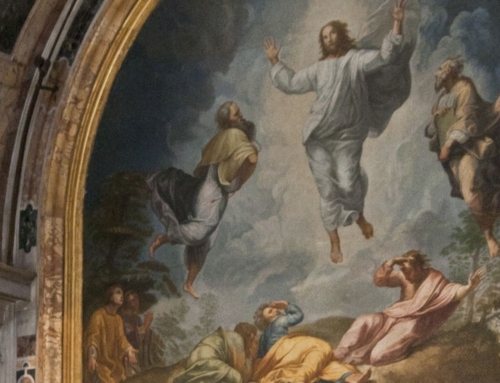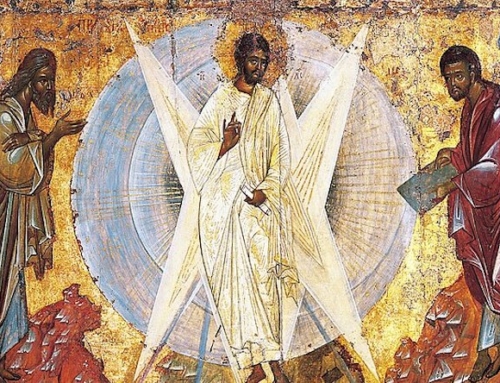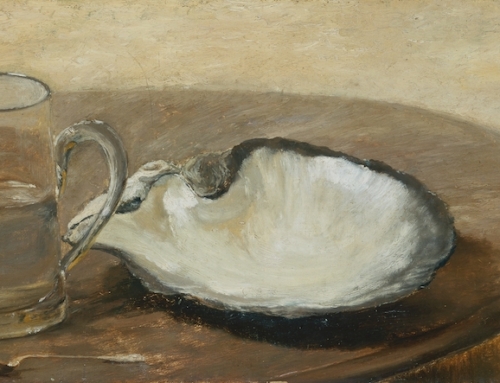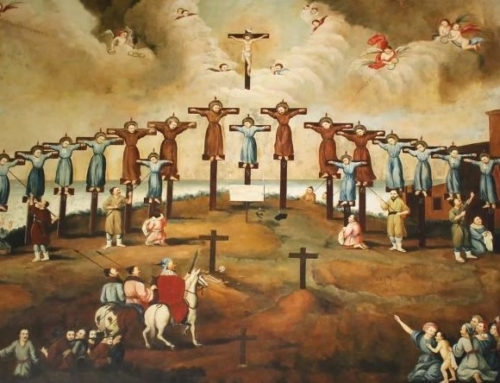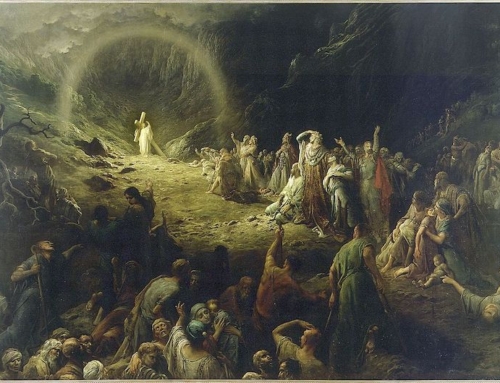We’re God-face blind.
There are people who see a face and have no way of registering who it is. Normally, someone sees together the eyes, nose, cheeks and lips so as to create a whole. However, those who suffer from prosopragnosia – commonly known as faceblindess – live in a world of strangers. They are incapable of associating a person with his face.
One such person is the contemporary painter Chuck Close. Close’s self-portrait above uses a grid in which he paints varying swirls of color. It ends up being a fragmented synthesis rather than a depiction of his face composed of flesh and blood. The face becomes an image of planes juxtaposed together. Close wants the viewer to piece the portrait together, in such a way that the viewer may see the face as he sees all faces. While this type of art is intriguing, it lacks the beauty and subtlety of expression of realistic portraiture, such as Da Vinci’s Mona Lisa. There’s a certain je ne sais quoi in the Mona Lisa that Close’s self portrait can’t possess. We need not debate which face is more beautiful or handsome. Close and others like him suffer a privation.
Peek-a-boo is one of the first games a mother will play with her child. The infant always squeals with delight when that loving face reappears. Even after infancy, whether child or adult, a person can still be overwhelmed with emotion at seeing a familiar face. They can even be brought to joyful tears. A stranger can change to a loved one before our very eyes in a moment, the moment one recognizes the person’s face. Though someone may keep a picture of that loved one, there is no substitute for gazing upon him in the flesh.
How fitting it is then that God said to the Psalmist, “Seek ye my face,” or that the Church prays, “When I see your face, I shall know the fullness of joy.” John the Beloved even writes, “We know that when he appears we shall be like him, for we shall see him as he is.” God wants us to see Him, or rather to know Him. It is in knowing that we will see the face of God and, indeed, not as we see the face of one we love on earth. One mustn’t be like Philip at the Last Supper: “Lord, show us the Father and that shall be enough.” One mustn’t be like Thomas: “Until I see the wounds in his hands… I will not believe.” Christ’s response to Philip is, “Still you do not believe?” and to Thomas, “Blessed are those who have not seen and yet believe.”
For each apostle, their understanding was still rooted in the flesh. It is not possible to see the essence of God with corporeal eyes. We cannot see the divine essence (St. Thomas Aquinas, Summa theologiae, I, q. 12). At best, we can see in creation the effects of God’s activity. But, even with that more limited possibility, we have trouble seeing the signs of God. In this life, our nature is wounded and we’ve been subjected to the flesh. God’s activity is omnipresent, yet we cannot see him. As St. John of the Cross writes:
How sad is the blindness of your soul! You are blind to the most dazzling light and deaf to the powerful voices which solicit you.
It seems that those who suffer from prosopagnosia are a more focused depiction of our fallen state. They can see people, yet they can’t see the faces that belong to those people. We live amongst those made in the image of God, yet we cannot see the face of God. The remedy for those who are face-blind requires an attentiveness to signs and familiarity with the person. The life of grace requires sacraments—exterior signs of an interior reality—and time in prayer with God. Although the full vision of God is in heaven, by living in His presence, we may begin to see Him now.
You may recall the story of Bl. Mother Teresa shared by Br. Nicholas a few months ago. She was able to see a dying man on the side of a road. The distractions and chaos of busy traffic typically create a tunnel vision, but not for her. She was waiting for Christ, she was looking for Christ, and she saw Christ suffering in that man. She put it this way,
Every person is Christ for me, and since there is only one Jesus, that person is the one person in the world at that moment. I see Christ in every person I touch, it is as simple as that.
Christs calls us to see Him in the other: family, friends, co-workers, the poor, or strangers. The words, “Whatever you did to the least of my brethren, you did it to me,” are written on the hearts of the saints. Their intimacy with God and watchful dispositions make them like the mother waiting for her son to return from war, or rather the mother is like the saints awaiting God. That final union will be as St. Augustine writes, commenting upon the phrase of St. Paul, “So that God may be all in all”:
God himself will be the goal of our desires; we shall contemplate him without end, love him without surfeit, praise him without weariness.
✠
Image: Chuck Close, Self-Portrait



